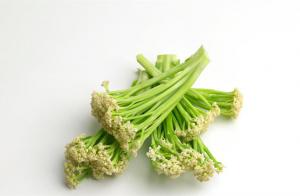By: Judy Davie - The Food Coach
 While summer may be over, the bounty of fresh produce available as we transition into Autumn is now far from limited. Thanks to a diverse array of hybrid offerings such as kalettes, papples, pica boos, red and gold kiwifruit, fioretto, along with an abundance of apple and tomato varieties, and vibrant colored carrots, our options remain plentiful. While summer may be over, the bounty of fresh produce available as we transition into Autumn is now far from limited. Thanks to a diverse array of hybrid offerings such as kalettes, papples, pica boos, red and gold kiwifruit, fioretto, along with an abundance of apple and tomato varieties, and vibrant colored carrots, our options remain plentiful.
These emerging hybrids bring together the best traits of different species, enhancing qualities like durability, yield, size, and taste through controlled cross-breeding.
Hybridisation, a process as old as nature itself, is now meticulously managed through modern farming techniques. By cross-pollinating compatible plant species, farmers create hybrids like broccolini, which blends the strengths of broccoli and Chinese broccoli. Such innovations, exemplified by the success of broccolini, offer convenient, nutritious options for consumers.
Consider the tangelo, a delightful fusion of tangerine and either pomelo or grapefruit, boasting a unique flavor profile rich in vitamins. Similarly, kalettes combine the nutritional benefits of kale and Brussels sprouts, offering a softer texture and a nutty flavor that appeals to a wider audience.
Fioretto, a cross between broccoli and cauliflower, exemplifies this trend, presenting an attractive new hybrid with the combined health benefits of its parent vegetables. Just as with hybrid fruits and vegetables, cross-breeding in the animal kingdom, like the popular Labradoodle, demonstrates the success of blending desirable traits from different breeds.
It's crucial to distinguish between hybrid produce and genetically modified (GM) foods. While hybrids result from natural or controlled cross-breeding, GM foods involve genetic engineering with DNA from different species. In Australia, approved GM crops primarily include canola, cotton, soy, corn, and sugar beet, with no approved imports of fresh GM fruits or vegetables.
However, a note of caution is warranted when consuming hybrid produce, especially those selected for sweetness. While sweeter varieties like cherry tomatoes and white sweetcorn may be popular, moderation is key due to their higher natural sugar content. Opting for original varieties ensures better nutritional value, emphasizing the importance of informed choices in our diets.
In navigating the world of hybrid produce, embracing innovation while maintaining awareness of nutritional considerations ensures a balanced approach to enjoying the bounty of nature's creations.
Comments
Be the first to comment!
|